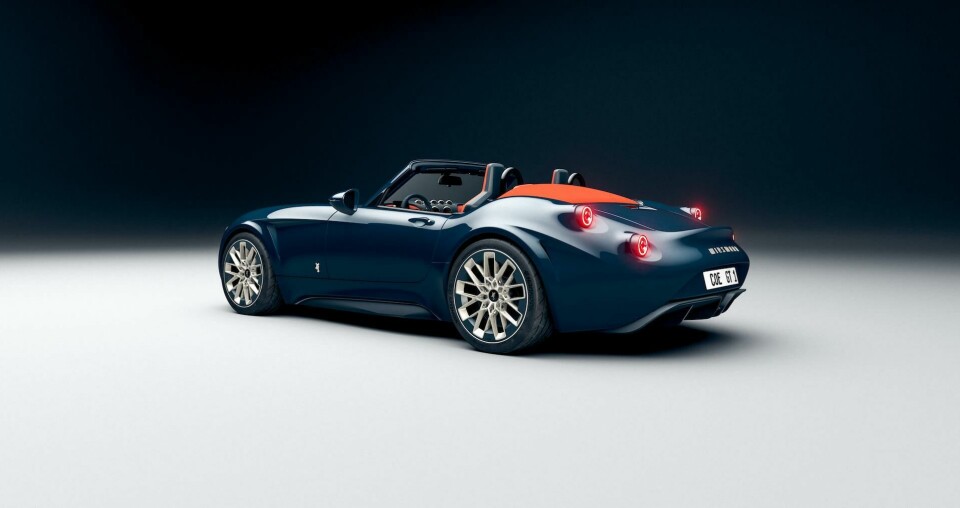
First look: Wiesmann’s Project Thunderball EV
Car Design News visited Wiesmann’s factory in Germany to get up close with its new electric sportscar and to chat with lead designer Andreas Kurbos
”We didn’t want to make a boring electric car,” says Roheen Berry, CEO of Wiesmann sportscars, a brand that many will remember from its gas-guzzling two-seaters of the noughties. Speaking to media during a tour of the factory in Dülmen, Germany, Berry was on hand to reveal the launch of the company’s latest model: the fully electric Project Thunderball.
It is a big move for the brand which in its heyday (prior to being bought out by Berry’s firm Contec Global in 2016) leveraged high-powered BMW engines and built its brand around the conventional thrill of driving. By current semantics, the shift to EV would seem to clash with that ideology – no more straight-piped exhaust notes, shunt-in-the-back gear changes or whiff of petrol – but Berry argues otherwise. In his eyes, the powertrain is only part of the package and Wiesmann buyers are sucked in by its story, aesthetics, opportunities for customisation and driving dynamics.
We are sure there will be no complaints on that front: Project Thunderball is a rear-wheel drive, carbon fibre-bodied sports can with twin electric motors that chuck out 680bhp, 1,100nm of torque and a 0-62 sprint in under three seconds. We didn’t get to see all of that unleashed in the car park outside the factory, but it’s clear this thing is more than a looker.
That is certainly a good platform on which to stage the return of a name that dates back to the late 80’s. While the company has always built bespoke sports cars to order, the nature of that process changed in 2008 when production moved to the factory in Dülmen; an architectural masterpiece in itself, it feels more like a showroom than an assembly line. Flanks of heritage models are on display on the upper level, with the main shop floor below sporting just a handful of part-built vehicles.
The team behind Wiesmann says it is sticking to the original principles of the brand, blending traditional craftsmanship with cutting-edge manufacturing technologies. Customers need patience and should not expect a rapid turnaround with something hand-crafted like this, suggests sales and marketing man Arne Kastner during the tour.
Project Thunderball is a striking looking sportscar with dramatic proportions – and that might even be underselling it. The car is more than two metres wide at the rear, carries 22-inch wheels and is punctuated by enormous rear wheel arches that tower above the rest of the shoulder line. A one-piece clamshell hood makes for very clean surfacing on the front of the car, which itself is defined by ‘three islands’ seen clearly when viewed front on. The grille is instantly recognisable as ‘Wiesmann’, as are the head and tail lights. Contrast carbon side sills and diffusers reduce the proportions of the body and accentuate those rear arches further.
Designers always try to create futuristic cars – but is this futuristic? I don’t think so
At 4440mm in length and a wheelbase of 2595 there are short overhangs, particularly at the front thanks to a long bonnet that is not typical of an EV. Aside from the fact that the team wanted to retain a conventional Wiesmann silhouette, this shape was possible because the batteries are mounted up front where the engine would be, rather than in the floor like a ‘skateboard’ platform. The idea is that battery packs can be swapped out and upgraded as technology improves, although details of how that would work exactly are thin on the ground at this stage.
A similar theme runs through the interior, which holds true to the Wiesmann principles (and aesthetic) of before. Roll bars rise out of the cabin behind the headrests, which feature the iconic gecko logo in contrast stitching. In a nod to the carbon fibre construction, there is plenty of that on display in the interior, cladding the dash, upper and lower door card and seat backs.
The rest of the interior sports an attractive real leather, most likely stitched by in-house leather expert ‘Victor’ who brings his skills from making high-end handbags. We are told that a vegan leather alternative is in the works and looks exactly the same, according to Berry. The steering wheel and indicators are upholstered in suede, with some parts being carried over from legacy models – there is not an unlimited budget here and savings have had to be made in some places. The dash itself sports seven individual dials that share information on the car’s status (are seven really necessary in an EV?) and can be heavily customised to order. A watch aficionado himself, Berry suggests they are like individual chronograph watch faces: “It’s like a Rolex.” Another pleasant addition is the ‘gumball’ door mechanism, which replaces a traditional lever or handle.
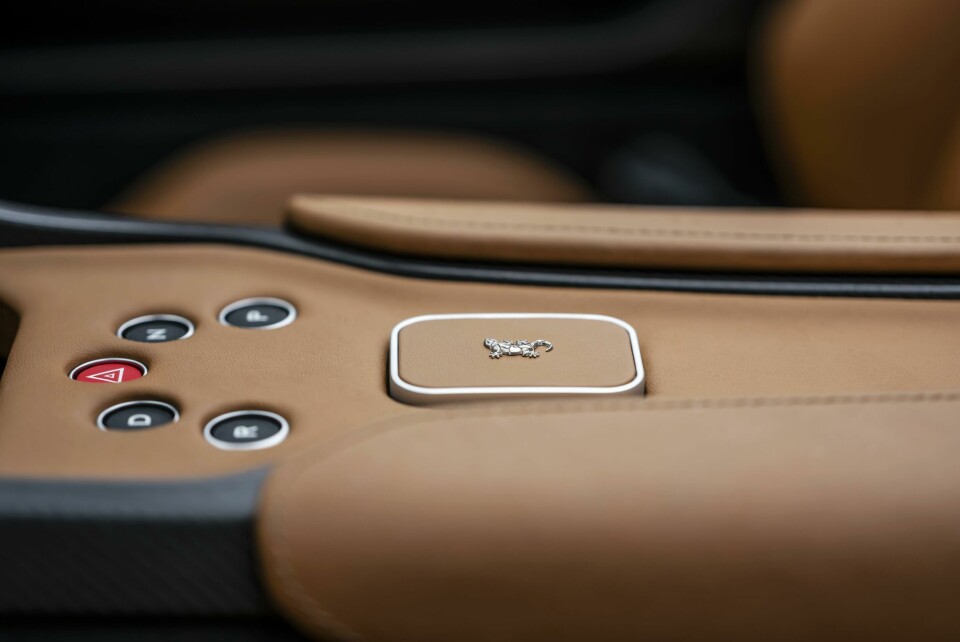
This is 2023 after all, so a small digital display houses the instrument cluster behind the steering wheel, with a larger one on the instrument panel for creature comforts like navigation, music and vehicle settings. The steering wheel itself is multifunctional, and what first looks like a piece of jewellery on the centre console is in fact the car key honed from a block of aluminium. It is weighty, totally on brand and seemed to create a stir among the influencer crowd in particular during the event.
Flappy paddles behind the steering wheel are a surprise, but these in fact control regenerative braking. The car on show is in a design freeze but was missing a three-point harness that will be added in later. It should go without saying but self-driving is not on the table, evidenced by an audible sigh from the Wiesmann team following an audience question.
There is also a trio of limited edition models with a carefully curated mix of colour and materials, led by CMF designer Katharina Otto of Studio Kurbos. One is murdered out in all black, with different finishes – satin, matt, gloss – used to accent different parts of the exterior and interior. This was inspired by the Batman film The Dark Knight. Another is based on the glamour of the Great Gatsby, with velvet, gold and burgundy of the ‘20s flowing throughout.
I feel connected to the project, the car, to the people… it is not your standard business relationship
Another is based on the French riviera, bringing ocean blues and greens into play and channeling high-end fashion brands like Hermés. Canvas fabric is used sporadically in the interior to give the ‘beachy’ feeling of a tote bag, while high gloss wood draws inspiration from the interior of a yacht. “You can change the feeling of the car completely,” Otto told CDN, adding that the role of CMF in car design is clearly becoming more significant with the heightened focus on interiors.
The design was led by Andreas Kurbos who approached Project Thunderball with the aim of respecting the brand’s heritage as it embraces modern tech trends. There were some sticking points when it came to things like the rear lights (with Kurbos pushing for two bulbs on each side instead of three, which would have been too much, he says) and also when it came to addressing the absence of exhaust tips. He settled on a central triangular fog light in the rear diffuser, a compromise that was preferable to imitation exhaust mouldings or daytime running lights. “I hate fake stuff,” he notes, advising that the air intakes and outakes are all functional either for cooling or aerodynamics.
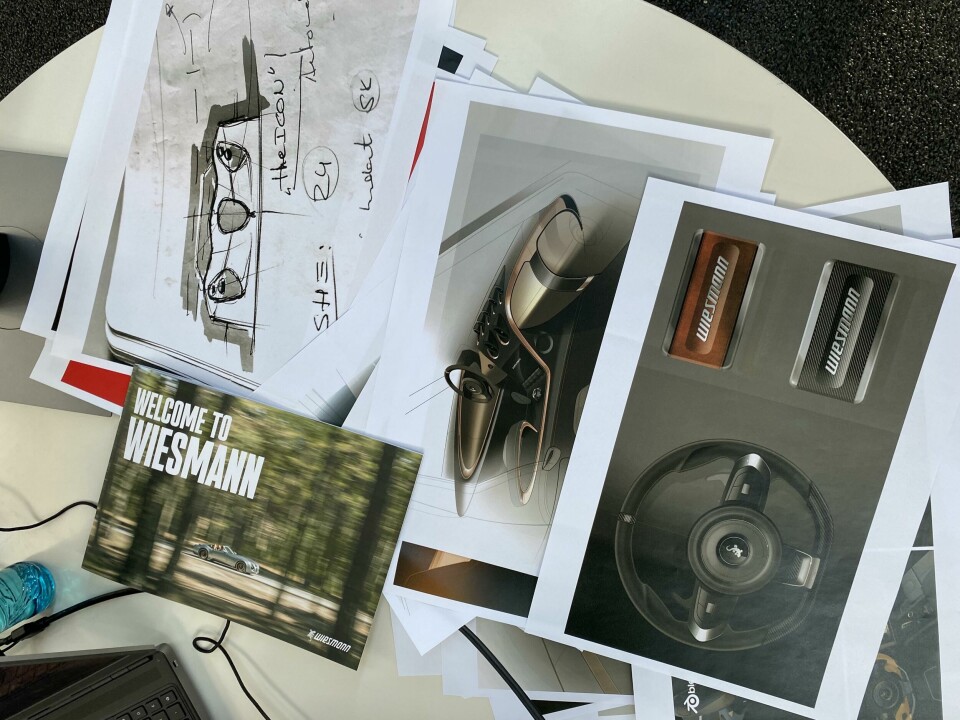
It was about bringing the success of the original Wiesmann models into the modern era, he explains, but that didn’t mean they had to push the boundaries. “To start, we had to understand and respect the brand’s heritage. Designers always try to create futuristic cars – but is this futuristic? I don’t think so,” Kurbos observes. ”When I say this is electric, people say: ‘but it doesn’t look like an EV’. We are ultimately celebrating the brand.”
As usual, it all started with a sketch: “It sounds romantic, but sketching is the simplest way to get character with the fewest lines possible.” Channelling his inner Goldilocks, Kurbos suggests that there are not too many lines, nor too few – it’s “just right.” From there, most of the design was done digitally as it just made sense for this project, he says.
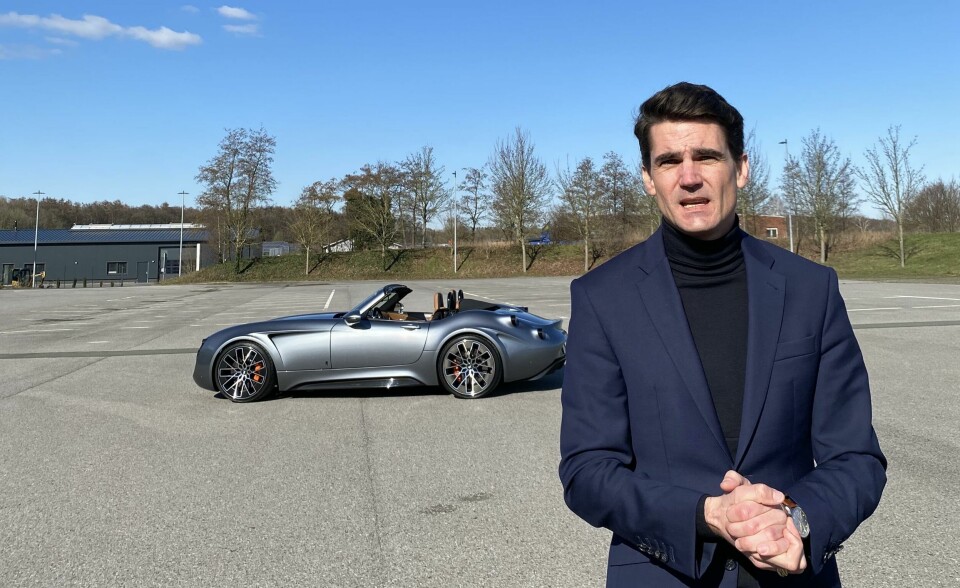
Studio Kurbos got the job through a happy accident in a way, with Andreas stumbling across a familiar face during a family holiday. “It was a funny coincidence. I was with my family in Slovenia, reading a magazine in the lounge. There was an article about [current CEO] Roheen, Wiesmann and the original CEO, Mario Spitzner, who came from Mercedes-AMG. He lived in Stuttgart like me, we had the same roots being from AMG, and so I thought we probably speak the same language, maybe share the same goals, so I got in touch. I messaged on a Saturday afternoon and on Monday morning at 7:15am we had a meeting arranged.”
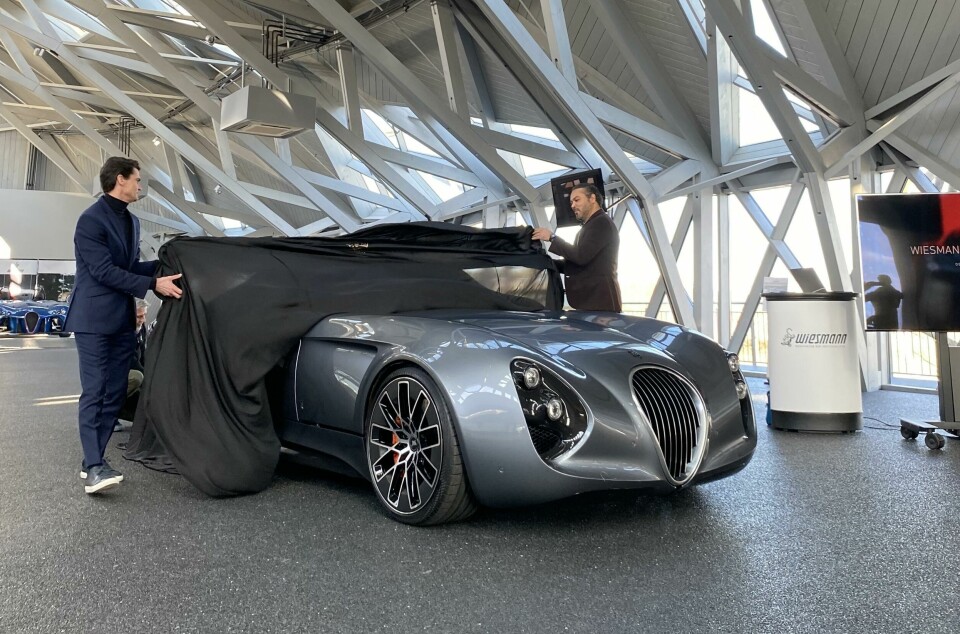
Studio Kurbos always works closely with its clients, but the relationship with Wiesmann runs a little bit deeper for Andreas in particular, who during an early design pitch with the Wiesmann board had to dash out for the birth of his daughter. That – alongside the close working relationship that has carried through – created a bond between Kurbos and Wiesmann. “I feel quite connected to the project, the car, to the people,” he explains. “I know all of them – it is personal, it is not just your standard business relationship.”
Wiesmann says that demand for Project Thunderball has been “exceptional” and the entire first year of production for 2024 has already sold out. And those that want it, really want it. With prices starting at €300,000, this is certainly a car for the enthusiast.




















































